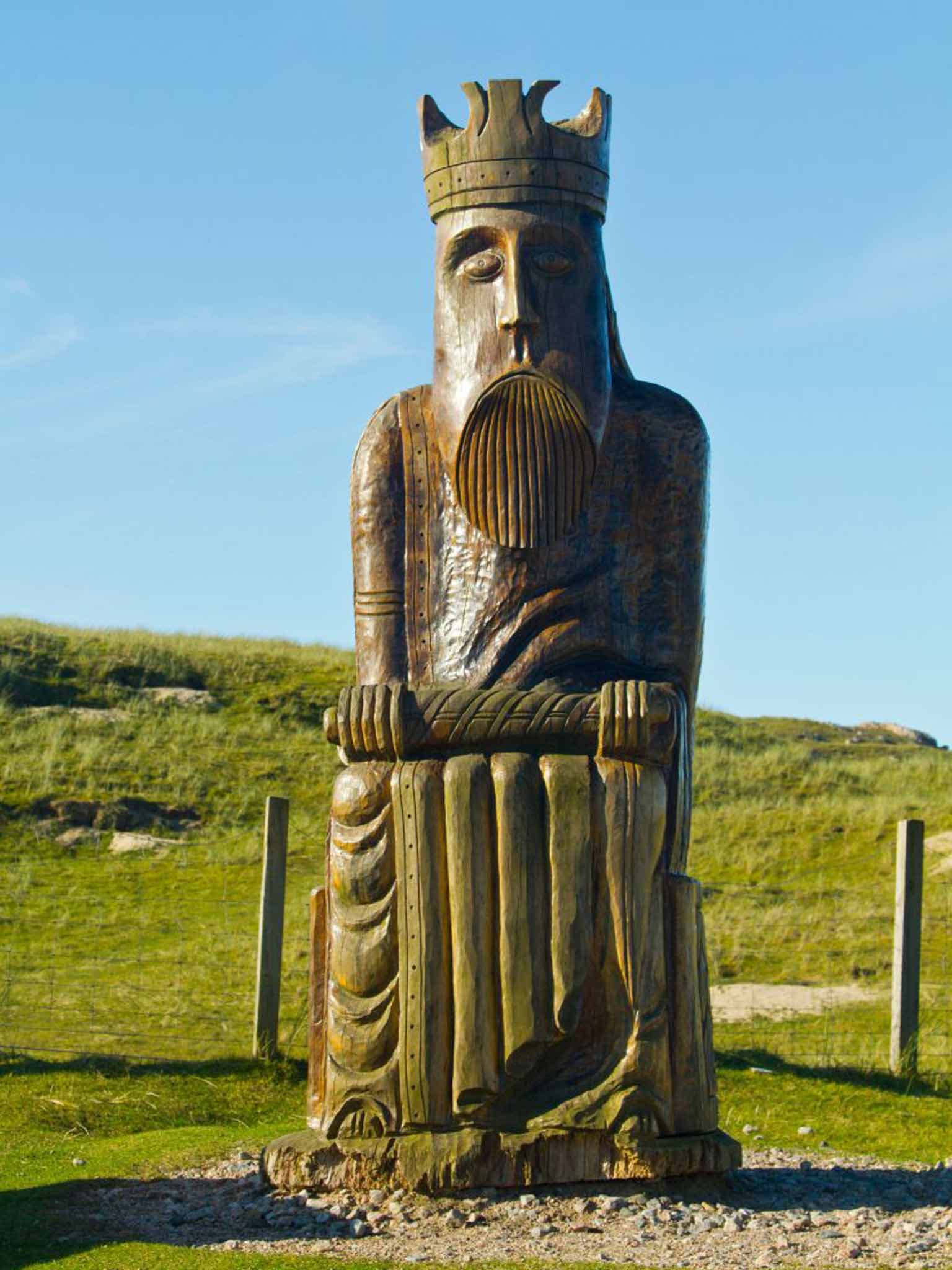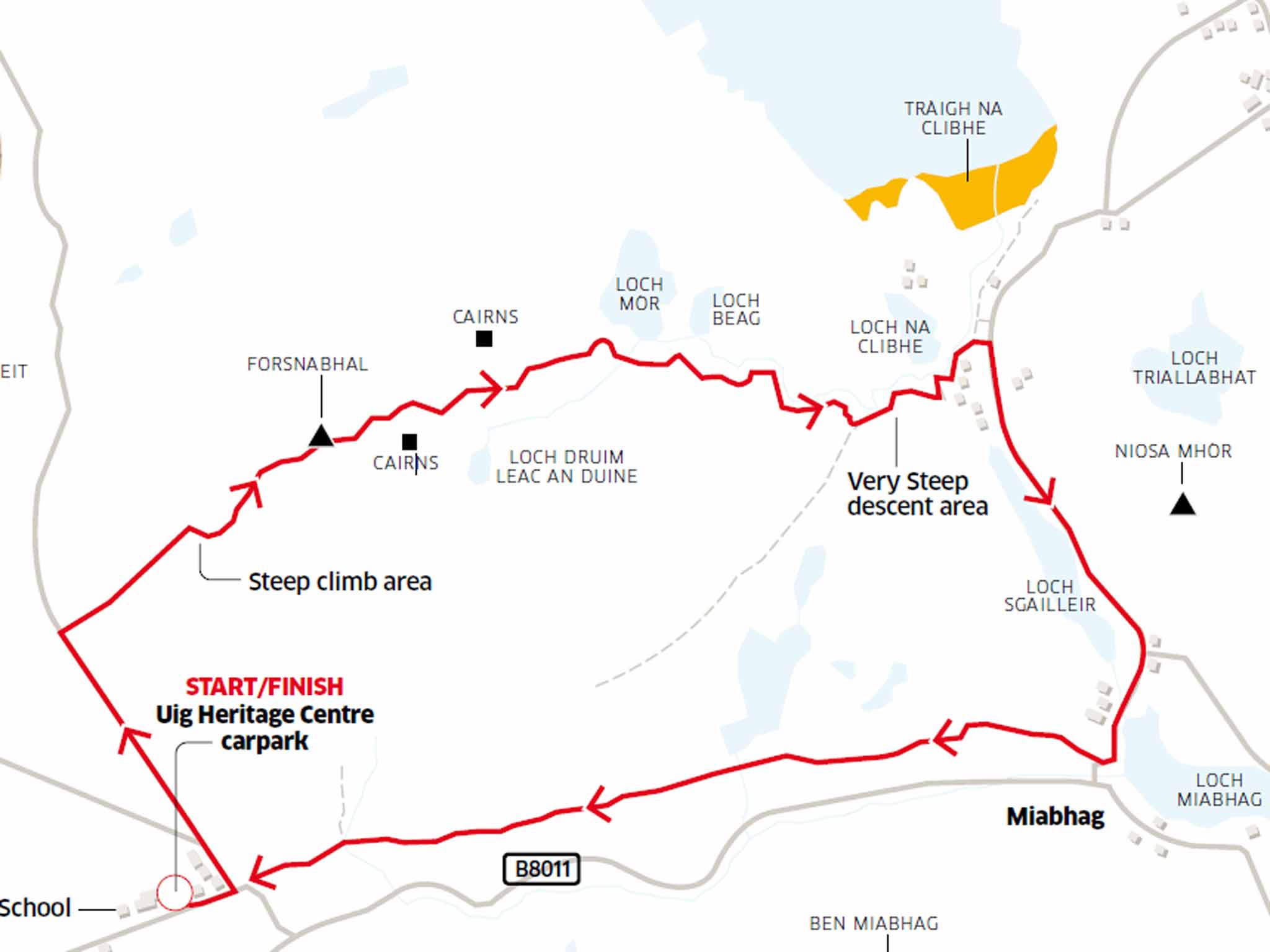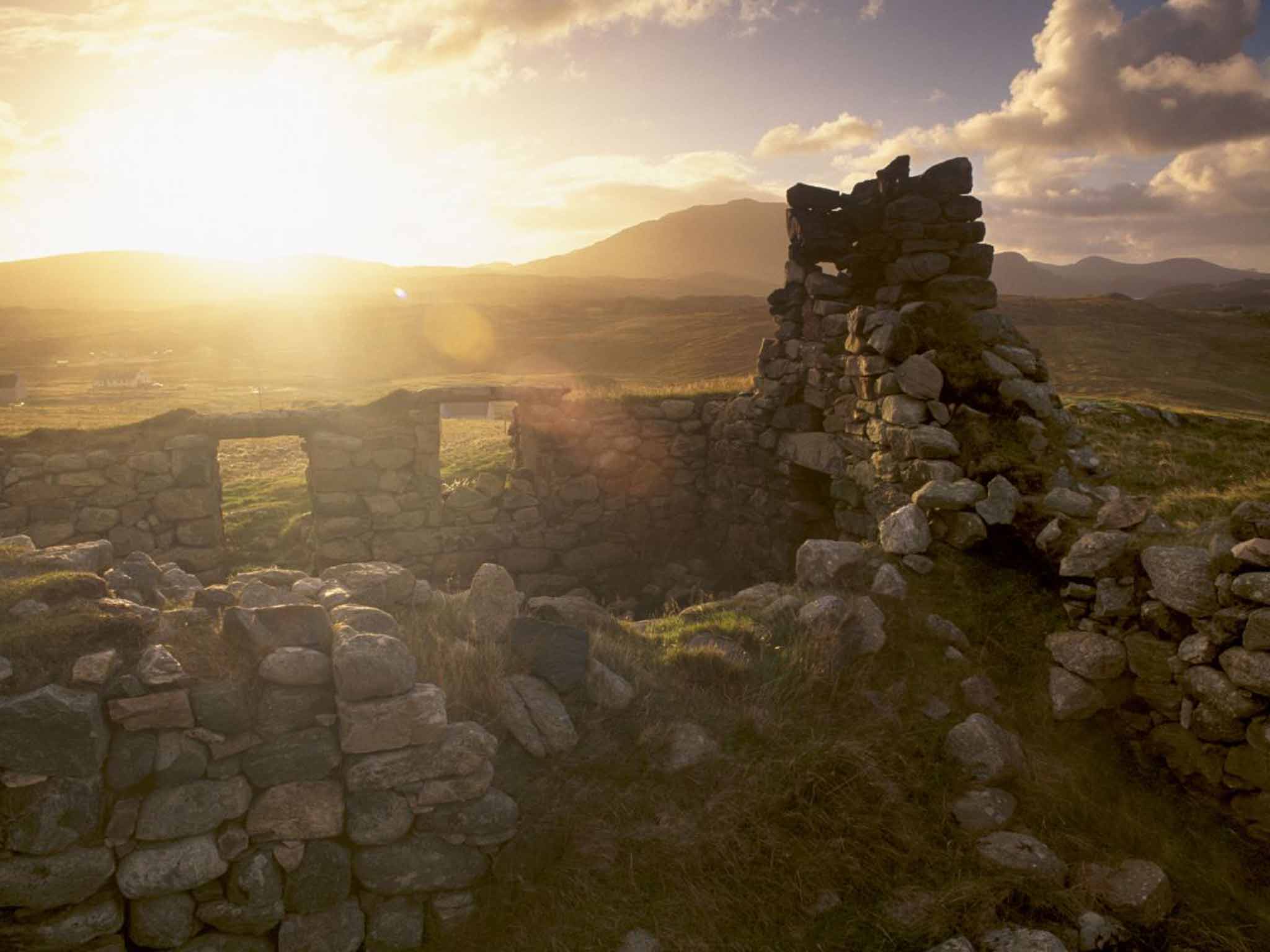Edinburgh is not the only place to stage a tattoo this summer. The island of Lewis, far away on the western edge of the UK, will hold one too – only the second there since the 1960s – with marching bands and Gaelic and folk music concerts.
The hope, says Tony Robson, one of its organisers, is that this will be a celebration of a culture that too rarely stands in the spotlight and that it will attract many descendants of those who left the island in desperate circumstances. "There are a lot of people in the US, Canada and Australia whose families originate in the Outer Hebrides," says Tony. "There are a tremendous amount of links to the 1800s, when people were either poor, or were shoved out by landlords and the Highland Clearances. People don't tend to forget; those events are still felt today."
Tony's words come back to me as I climb to the summit of Forsnabhal, deep in the Uig peninsula on the western edge of Lewis. The view is both magnificent and melancholic, and my eye is drawn to the scattered, smashed crofts and summer dwellings, known as sheilings.

The final section is steep, but I'm rewarded at the summit with a genuine "wow" moment and it's easy to ignore the telecommunications infrastructure. To the east is the rugged uninhabited island of Little Bernera, behind that the outline of the coast of Lewis; to the south there's the solid wall of mountains at the heart of Harris; to the west are the seemingly infinitely large Uig sands, where the Lewis chessmen were uncovered nearly 200 years ago. The 360-degree view is completed by the lonely Aird peninsula, poking northwards. From there, it's clear water to the polar ice cap. Yet, there's more. Clearly visible on a good day, are the islands of St Kilda, which loom up hauntingly, in a vaguely "Bali Ha'i" way.
Descending the hill, I aim for a track a mile distant. To get there involves a classic Hebridean yomp across open moorland, bouncing off sprigs of heather, skipping across the boggier bits and funnelling down a miniature glen. The track winds its long and lonely way past Loch Mor and a marooned islet colonised by common terns. The path almost circumnavigates the loch before flicking south to reveal a hidden, smaller loch. So far, I've followed the track for more than a mile and it has the feel of a wild, moorland walk set deep in the Highlands, far from the sea.
Then, the track twists around a hairpin bend and jolts me back to the coast, revealing glorious Clibhe Beach, far below, half a mile long and pummelled by rollers from the Atlantic. The track drops down towards the beach. Far up on the right-hand corner of this delightful picture is a dramatically perched cemetery. Like so many graveyards on the Outer Hebrides, it seems to all but punch out into thin air above the ocean.

The track joins the quiet road that runs around the Bhaltos peninsula and passes Loch Sgailleir, long and thin, its inky waters coloured by peat drained off the surrounding steep hills.
Many walks tend to wind down near the finish line, but there's a glorious crescendo in store. I take a steep goat's track uphill to rise high above Bhaltos Glen. Following the fenceline, I glance down at the thrilling, dizzying gorge, created by melting glaciers carrying a sandy outwash that carved deeply and steeply, through the rocks. It's a bit like walking through an empty Cheddar Gorge or Glen Coe. Across the glen, the southern plateau is just as dramatic, with a lonely loch glistening in the sunshine of this lost world. It's possible that in modern times fewer people have seen this exact view than have climbed Mount Everest.
The plateau drills west for the best part of two miles before gently dropping me down to a stony track and a gate back to Timsgearraidh. I finish the walk back at what proves to be a life-enhancing community café and museum. A generous helping of salmon and salad and a mouth-watering home-made ice cream put me back on my feet. I add it to my personal list of the world's superb, hidden cafés. The adjacent museum is up there, too, with a replica of a traditional blackhouse and accounts of just how tough it has always been to eke out a living in Uig. People may have been driven away, and not missed the hardships they left behind, but you can see why they – and outsiders – are drawn here.
Getting there
Caledonian MacBrayne (0800 066 5000; calmac.co.uk) ferries sail to Stornoway on Lewis from Ullapool, which has bus connections from Inverness; see bit.ly/InvUIla.
Flybe (0871 700 2000; flybe.com) flies to Stornoway from Inverness, Glasgow and Edinburgh, while Eastern Airways (0870 366 9100; easternairways.com) flies from Aberdeen except at weekends. Mark Rowe travelled with Cross Country Trains (0844 811 0124; crosscountrytrains.co.uk) to Edinburgh and on East Coast's Highland Chieftain service (08457 225 225; eastcoast.co.uk) to Inverness. Other services are operated by ScotRail.
Staying there
Mark Rowe stayed at Taigh a' Chreagain, 15 Valtos, Uig (01851 672209). Doubles start at £60, B&B.
Visiting there
The Lewis Tattoo (bit.ly.LewTattoo) takes place from 7.30pm on 8 August to 11pm on 9 August.
More information

Join our commenting forum
Join thought-provoking conversations, follow other Independent readers and see their replies
Comments